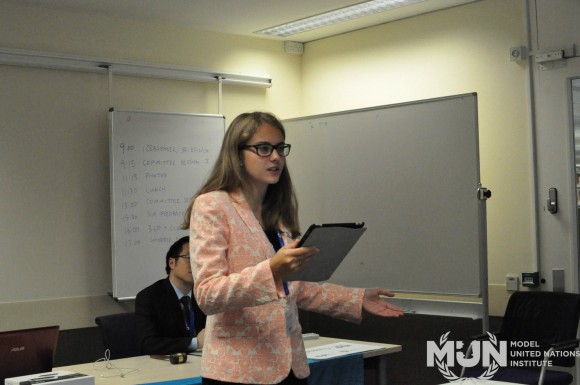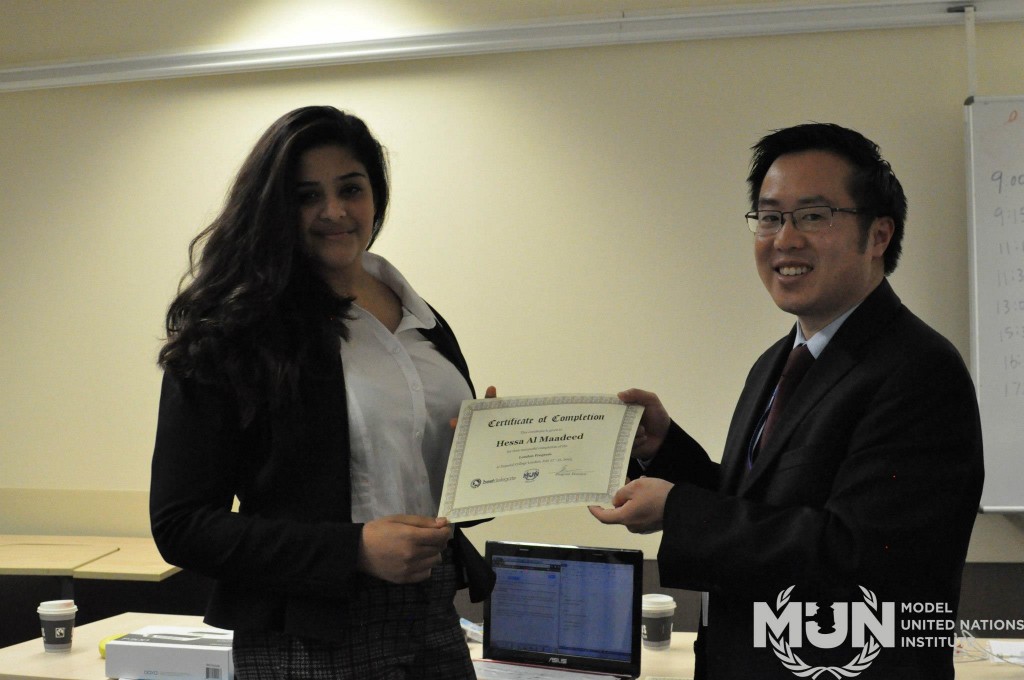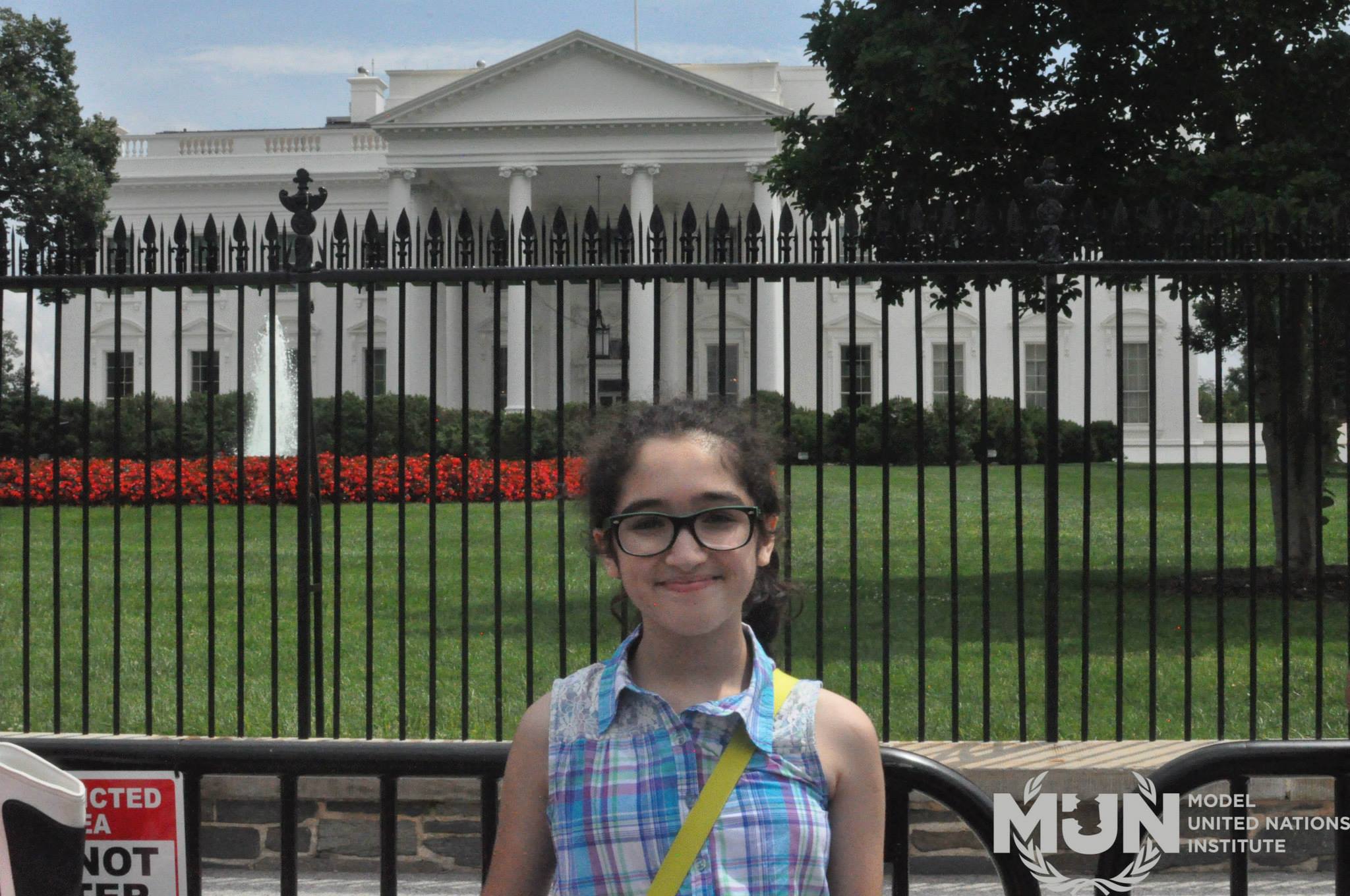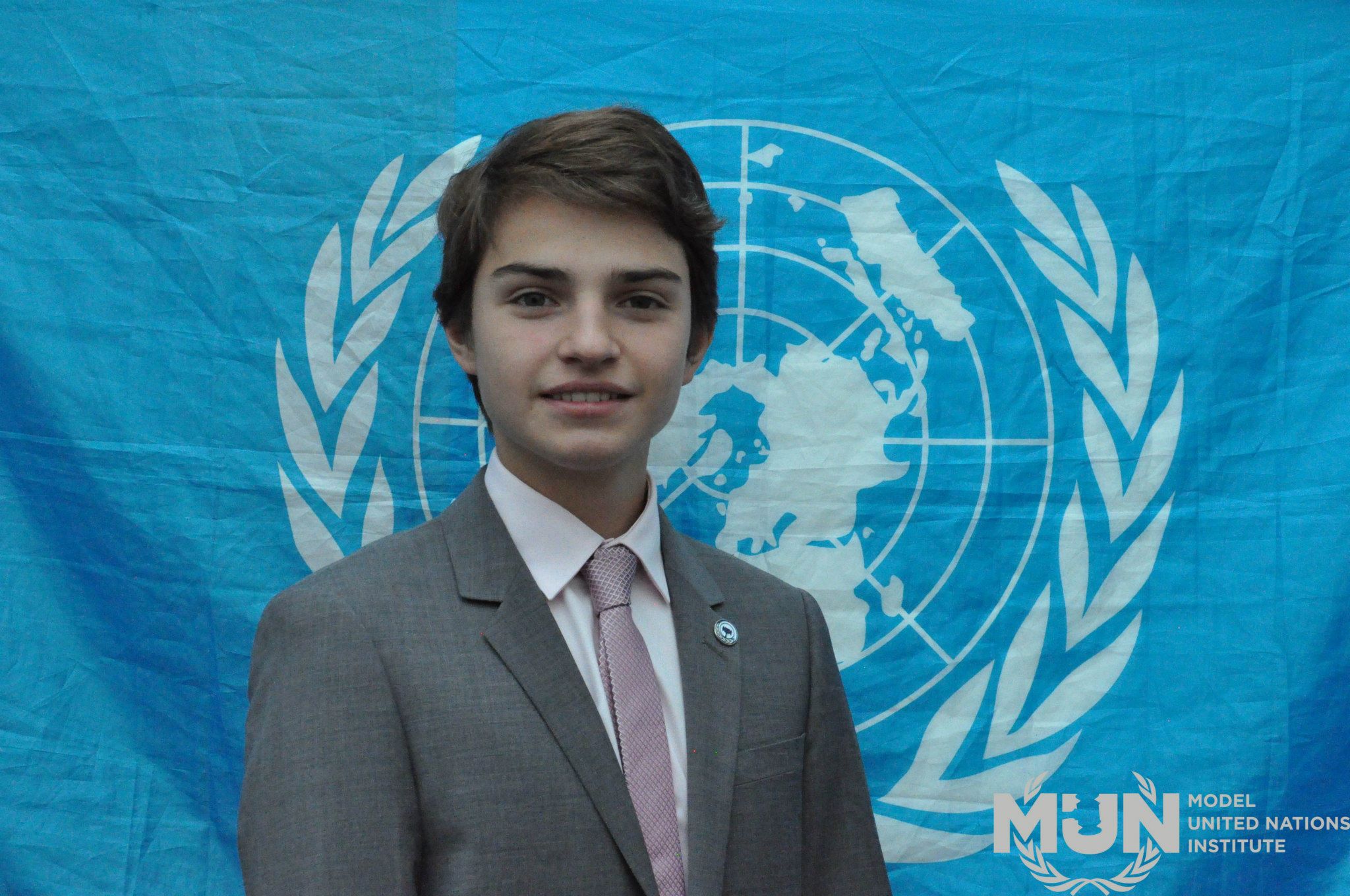“MUN isn’t something for overly ambitious kids to look fancy, it’s a program that allows us to learn to make connections with others, to get our point across and influence others. I am truly grateful for joining the Model United Nations Institute because they taught me all that”
Nowadays there are a plethora of summer camps where the students can do great activities, have fun and meet many people, however, the programs at the Model United Nations Institute are a cut above the rest, as any MUNI alumnus will tell you. As students, we are never ONLY doing simulations of the United Nations (no big deal), but we also learn how to improve our public speaking, research and debate skills simultaneously. Moreover, the topics we learn about and discuss are current affairs, and every student has the chance to learn from the best as the diplomacy fellows really love what they do: teaching the students of today to become the leaders of tomorrow.

Irene Abadia, International MUNI Student, and Alumni Board Member, giving a speech at the London camp
Nevertheless, MUN is not the same in every country. As sure as there are 193 countries in the UN, there are multiple styles of Model UN. Whereas in the Americas and Asia the UNA-USA Procedure is mainly used, in the Middle East as well as in Asia, THIMUN Procedure is more popular (see THIMUN Qatar and THIMUN Singapore as two examples of it). Moreover, we could highlight the fact that Europe is the only continent where the UNA-USA, THIMUN and UN4MUN Procedures are used.
Therefore, international students can find the procedure used at MUNI different from the one used in their own country. But don’t worry if you are an international student! Actually, one of the objectives of the MUN Institute is to learn the procedures used in all styles of MUN. Thus, MUNI gives you an extensive knowledge of all the different procedures, which isn’t necessarily easy to do on your own, because every procedure has elements distinct from the others. For instance, whereas in THIMUN the delegates have to write their resolution before the debate, in the UNA-USA Procedure the resolution has to be written during the debate. In fact, resolutions written in advance, depending on the conference, may be automatic grounds for disqualification from winning awards.

Alumni Board President Steve Tempesta with 3 International MUNI Students from Canada, Annie, Katherine, and Richard
International students have a wide array of different opportunities and experiences that many do not have. From culture, to learning, and to MUN, international students have exciting backgrounds and personalities. International students have the ability to use many different languages and techniques that many Model UN clubs and programs don’t necessarily have. It is a unique quality and privilege that international students can have these experiences.
Learning and education is always a priority when it comes to MUN and that is an aspect that international students thrive on. It may seem to some that international students have difficulty adjusting to different styles of Model UN but actually it is the opposite. By coming from many different cultural background and ethnicities, international students are able to learn and integrate into many different types of MUN programs and styles of MUN.

BestDelegate & MUNI co-founder Ryan Villanueva teaching MUN to a group of students from China at the Harvard Camp
Regarding the various styles of MUN, we could say that whereas the terms can be different, the purposes do not vary. To cite some of them, lobbying -all the action during the first day of committee- in THIMUN Procedure is unmoderated caucus in the UNA-USA Procedure; main and co-submitters in THIMUN procedure are sponsors in the UNA-USA Procedure.
Another key difference between THIMUN and the UNA-USA Procedure is the fact that in THIMUN there are NO AWARDS. Besides, THIMUN conferences are always staffed by high school students.
Concerning the level of formality, THIMUN conferences are usually more formal not just on the way of proceeding but also on the attire.
For these little dissimilarities, MUN can be seen differently depending on the region. However, as international students at the MUN Institute have shown, it does not matter about where you come from, but how passionate you are for Model United Nations.
“I would say that MUNI in London is a mind opening program which gives students the opportunity to think independently while at the same time being creative”
In conclusion, the great expansion of MUN can be seen as a challenge, especially with all of the different variations that follow this expansion. Yet what matters, after all, is the fact that all the delegates -no matter from their gender, race or nationality- work together in order to find solutions to worldwide problems.
Article by Irene Abadia, Takema Kajita, Miles Nabritt










